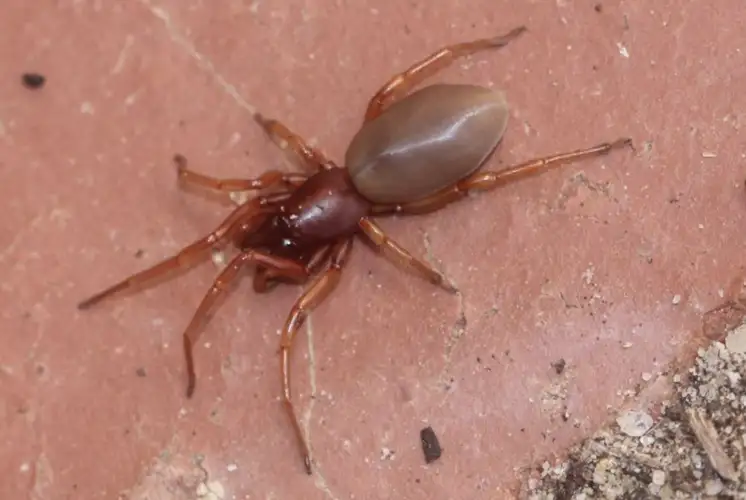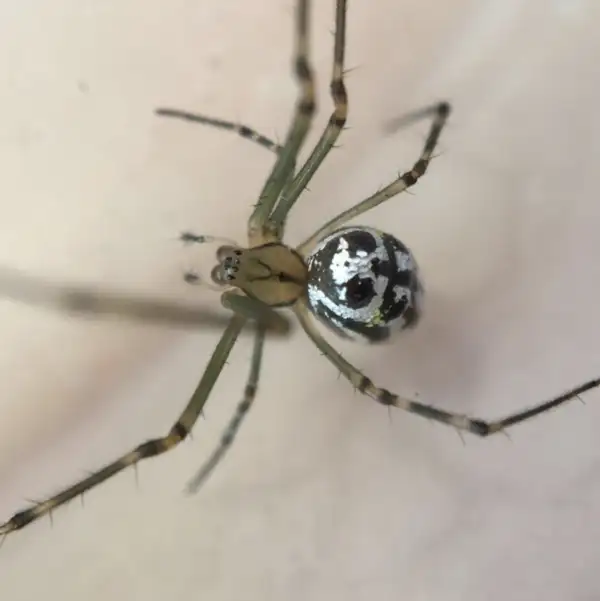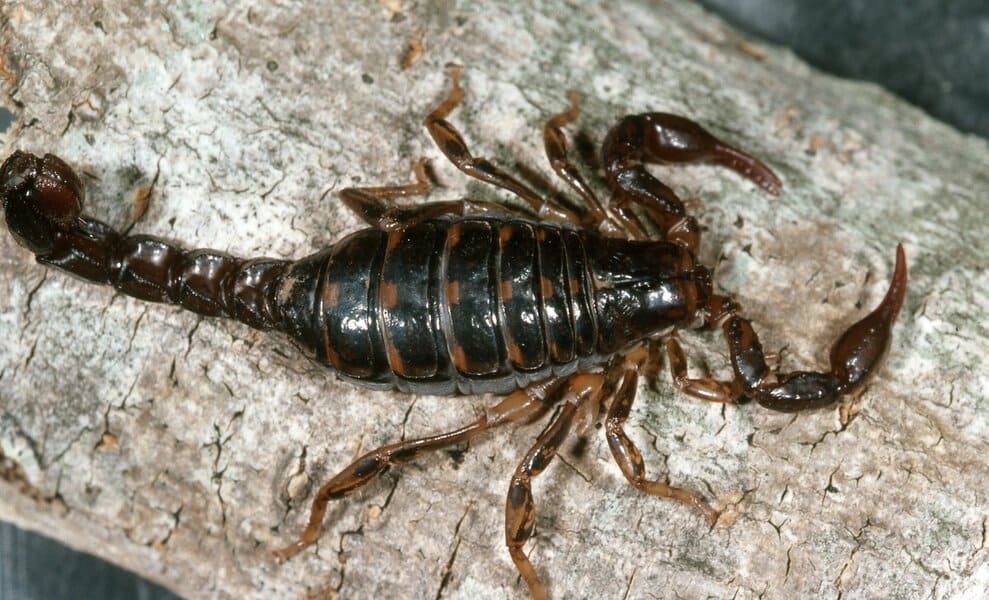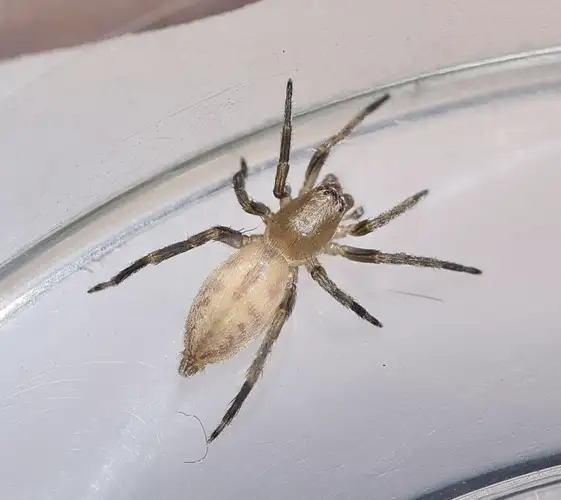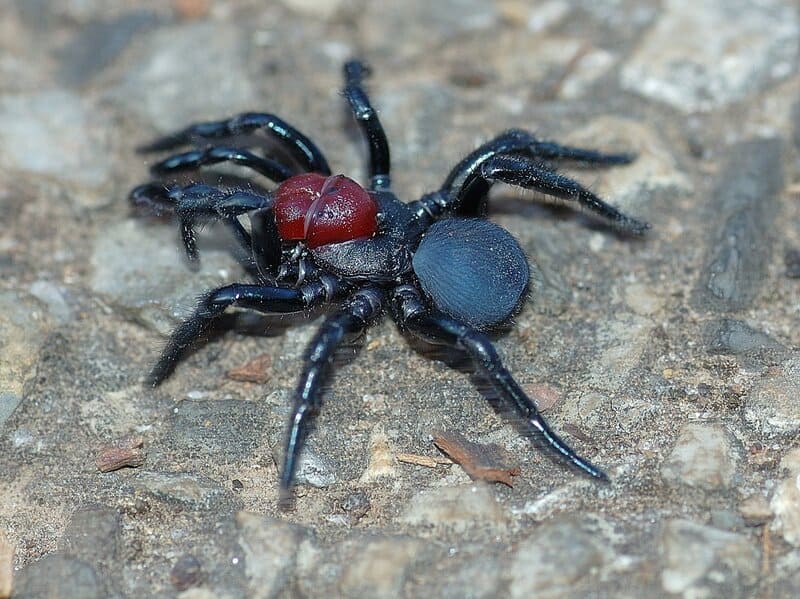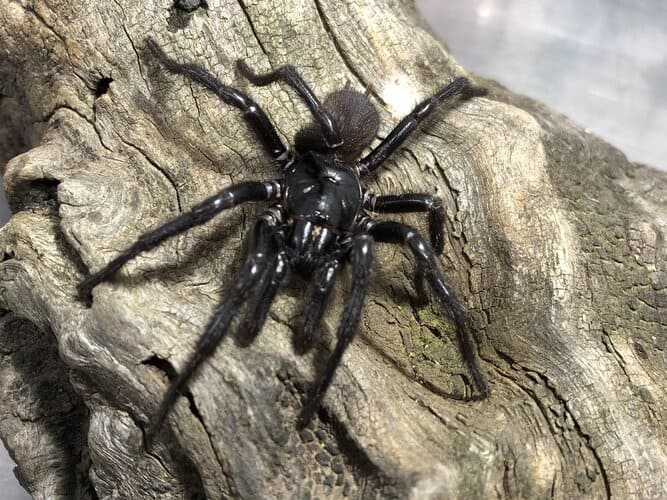Slater-eating Spider
IUCN
LCBasic Information
Scientific classification
- name:Slater-eating Spider
- Scientific Name:Dysdera crocata C. L. Koch, 1838
- Outline:Arthropoda
- Family:Dysderidae Dysdera crocata
Vital signs
- length:Adult females about 11–15 mm, males about 9–10 mm; body length may approach 20 mm
- Weight:Light-bodied ground spider, typically a few hundred milligrams depending on individual size
- lifetime:Estimated around 1–2 years depending on climate and predation
Feature
Nocturnal ground hunter specialised on woodlice (slaters), with only six eyes and very large forward-pointing fangs; builds a silken sac-like retreat instead of a prey web.
Distribution and Habitat
Moist, sheltered ground habitats under stones, bark, logs and debris in gardens, parks, forest edges and urban areas across many temperate regions.
Appearance
Bright orange-red to reddish-brown cephalothorax and legs with a pale cream or grey abdomen; cylindrical, compact body and conspicuously oversized fangs; six eyes in a tight oval group.
Details
The Slater-eating Spider is a ground-dwelling hunting spider that specialises in feeding on woodlice and related crustaceans, commonly called slaters. Its scientific name is Dysdera crocata, a member of the family Dysderidae. Originally native to the Mediterranean and parts of Europe, it has now spread with human activities to many other regions and is frequently encountered in gardens and urban habitats.
Taxonomy & Names
Common English names: Slater-eating Spider, Woodlouse Spider, Woodlouse Hunter
Scientific name: Dysdera crocata C. L. Koch, 1838
Family: Dysderidae (woodlouse hunter spiders)
Genus: Dysdera
Appearance
The Slater-eating Spider is quite distinctive and can be recognised by several clear features:
Body size: adult females are about 11–15 mm long, males about 9–10 mm; overall body length can approach 2 cm;
Colouration: the cephalothorax and legs are bright orange-red to reddish brown, while the abdomen is cream, pale grey or yellowish brown, giving a strong colour contrast;
Large fangs: it has a pair of very long, forward-pointing chelicerae (fangs) that look oversized for the body and are used to pierce the hard armour of woodlice;
Six eyes: unlike most spiders, which have eight eyes, this species has only six eyes arranged in a tight oval;
Body shape: the body is somewhat cylindrical and compact, with relatively short but strong legs adapted for moving among stones and leaf litter.
Distribution & Habitat
Dysdera crocata is believed to have originated in the Mediterranean–European region, but it is nowcosmopolitan and has been introduced to many parts of the world. It is common in:
City and suburban gardens, vegetable patches and backyards under stones, bricks and timber;
Parks, hedges and landscaped areas with moist ground cover;
Forest edges and places with deep leaf litter or rotting wood;
Occasionally basements, sheds and other damp human structures.
The spider prefers moist, sheltered microhabitats close to the ground, which are also favoured by its prey, the woodlice.
Behaviour & Diet
The Slater-eating Spider is a nocturnal wandering hunter:
During the day it hides under stones, bark, planks or in a silk-lined retreat;
At night it leaves its shelter to actively search for prey on the ground;
Its primary diet consists of woodlice (slaters, sowbugs and pillbugs), but it may also take other small invertebrates when available.
When it encounters a woodlouse, the spider lunges forward and uses its powerful fangs to grip the prey from the sides, piercing the tough exoskeleton and injecting venom. The prey is then carried to a more secure spot to be consumed.
Retreats & Reproduction
Slater-eating Spiders do not build prey-catching webs. Instead they construct a silken, sac-like retreatunder stones or in crevices, which serves as:
a daytime hiding place and shelter;
a safe location for moulting;
a protected nursery where the female lays and guards her eggs.
The female usually seals herself inside with the egg sac until the spiderlings hatch and are ready to disperse, providing additional protection during the earliest life stages.
Venom & Medical Significance
The spider’s large fangs mean that a bite can be quite painful, and people may experience local redness, swelling or itching at the site. However, available medical reports indicate that the venom is not considered dangerous for healthy adults and serious systemic symptoms are very rare.
Basic first aid recommendations include washing the bite with soap and water, applying a cold pack for pain and swelling, and seeking medical advice if severe or unusual symptoms occur, especially in children or allergy-prone individuals.
Ecological Role & Relationship with Humans
By feeding on woodlice and other small invertebrates, Slater-eating Spiders contribute to natural regulation of ground-dwelling arthropods in gardens and urban green spaces. In most situations they can be regarded asbeneficial predators rather than pests.
If one is found indoors, the simplest solution is usually to gently capture it in a container and release it outside, rather than using insecticides. Reducing damp clutter near buildings will also make conditions less attractive for both woodlice and their specialised spider predators.
FAQ
Q1. Why is it called the Slater-eating Spider?
“Slater” is a common English name for woodlice and related crustaceans. Dysdera crocata feeds
primarily on these animals, so it is widely known as the Slater-eating or woodlouse-hunting spider.
Q2. Is the Slater-eating Spider dangerous to humans?
No serious danger is known for healthy adults. Bites can be painful because of the large fangs and may cause
local redness and swelling, but serious systemic effects are very rare.
Q3. Should I remove Slater-eating Spiders from my garden?
They are generally considered beneficial predators that help to control woodlice and other small invertebrates.
If their webs or retreats are not in an inconvenient spot, it is usually best simply to leave them alone.
Q4. How can I prevent them from coming indoors?
Keep indoor areas dry, seal cracks and gaps near ground level, and reduce piles of damp debris close to the house.
If a spider does wander inside, gently capture it in a container and release it outdoors.

